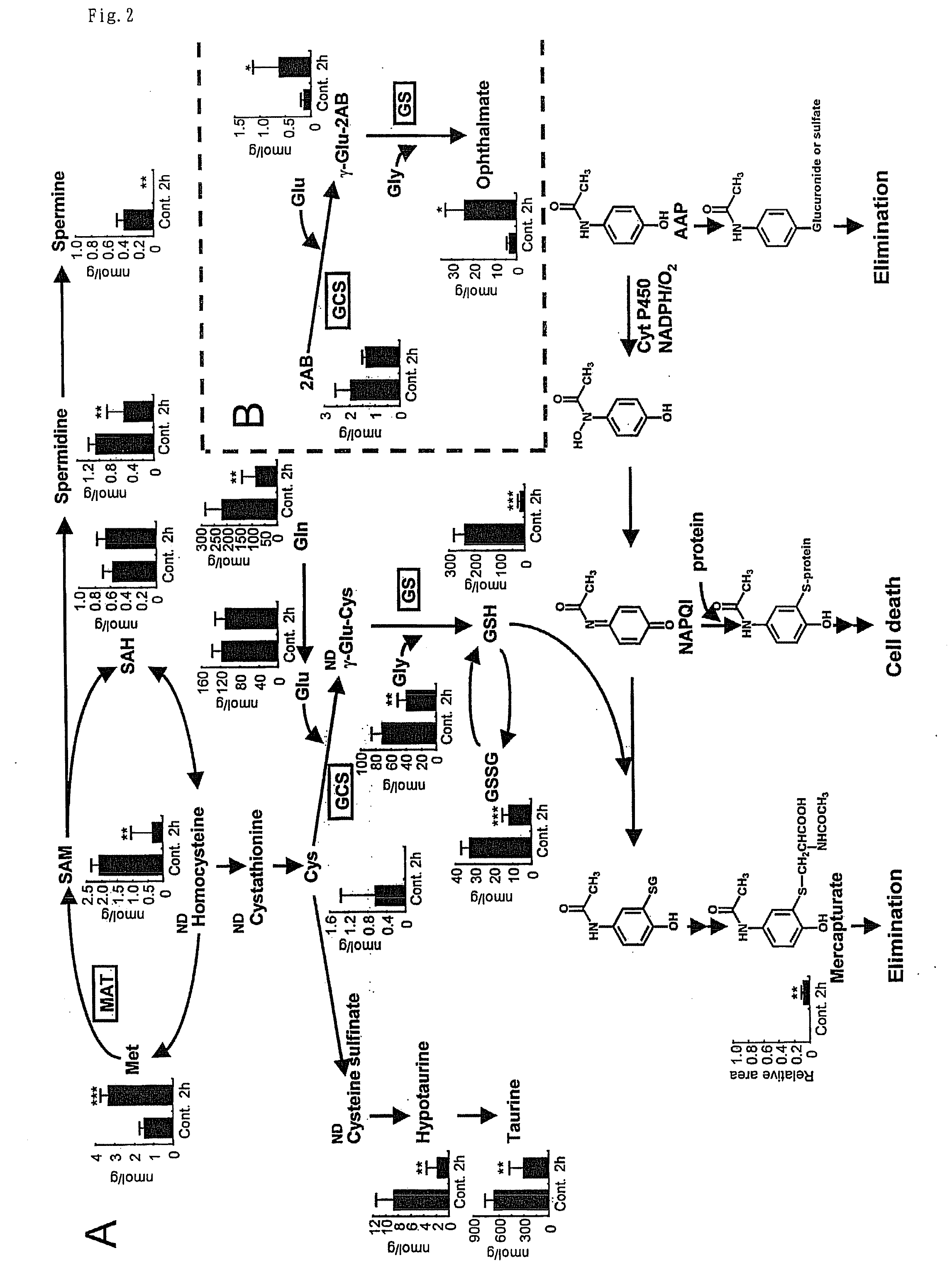Method for determination of oxidative stress
a technology of oxidative stress and determination method, which is applied in the field of determination method of oxidative stress, can solve the problems of difficult data acquisition or detection, and achieve the effects of rapid detection of oxidative stress, stable data acquisition or detection, and easy oxidation
- Summary
- Abstract
- Description
- Claims
- Application Information
AI Technical Summary
Benefits of technology
Problems solved by technology
Method used
Image
Examples
example 1
Sample Preparation from AAP-Administered or Control Mice
[0031]Male mice fasted overnight were anesthetized by intraperitoneal injection of pentobarbital sodium (60 mg per Kg body weight). Acetaminophen (AAP), which is an oxidative stress causing agent, or physiological saline as control was injected (150 mg per Kg body weight). At 1, 2, 4, 6, 12 and 24 hours after the AAP administration, liver (about 300 mg) and serum (200 μl) were collected from the mice.
example 2
Metabolites Extraction from Liver
[0032]The liver (about 300 mg) harvested from mice was immediately plunged into 1 ml of methanol containing internal standards and homogenized to inactivate enzymes and stop increase in metabolism. Then, 500 μl of pure water was added and 300 μl of the solution was collected. 200 μl of chloroform was added to the solution, which was then thoroughly mixed. The solution was centrifuged at 15000 rpm at 4° C. for 15 minutes. After left standing, the separated 300 μl-water-methanol phase was centrifugally filtered through an ultrafiltration filter (5 kDa cutoff) to remove proteins. The filtrate was lyophilized and 50 μl of Milli-Q water was added thereto prior to CE-MS (CE-TOFMS) analysis.
example 3
Metabolites Extraction from Serum
[0033]Serum (200 μl) was plunged into 1.8 ml of methanol containing internal standards and mixed. Then 800 μl of pure water and 2 ml of chloroform were added, and the solution was centrifuged at 5000 rpm at 4° C. for 5 minutes. After left standing, the separated 800 μl-water-methanol phase was centrifugally filtered through an ultrafiltration filter (5 kDa cutoff) to remove proteins. The filtrate was lyophilized and 50 μl of Milli-Q water was added thereto prior to CE-MS (CE-TOFMS) analysis.
PUM
 Login to View More
Login to View More Abstract
Description
Claims
Application Information
 Login to View More
Login to View More - R&D
- Intellectual Property
- Life Sciences
- Materials
- Tech Scout
- Unparalleled Data Quality
- Higher Quality Content
- 60% Fewer Hallucinations
Browse by: Latest US Patents, China's latest patents, Technical Efficacy Thesaurus, Application Domain, Technology Topic, Popular Technical Reports.
© 2025 PatSnap. All rights reserved.Legal|Privacy policy|Modern Slavery Act Transparency Statement|Sitemap|About US| Contact US: help@patsnap.com



